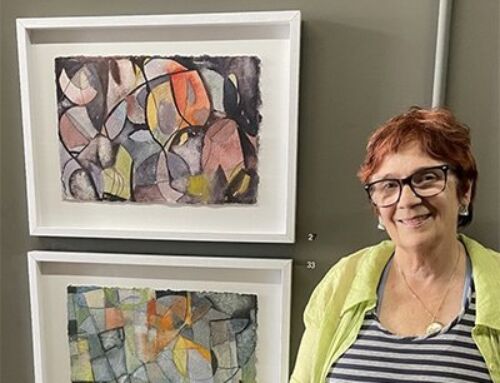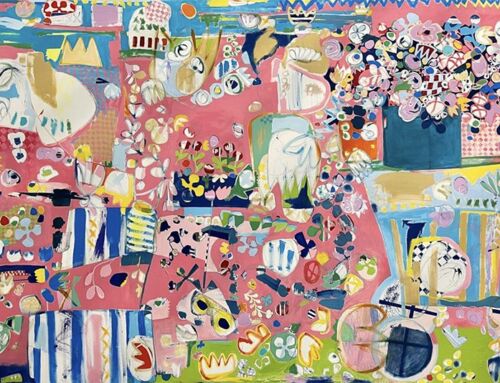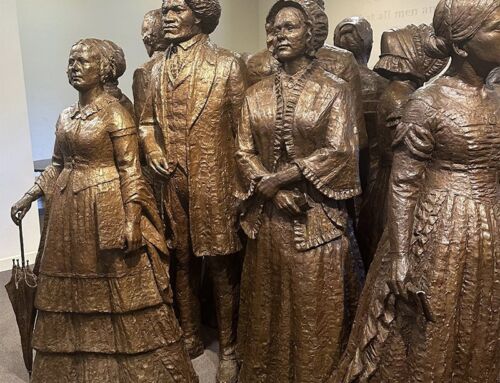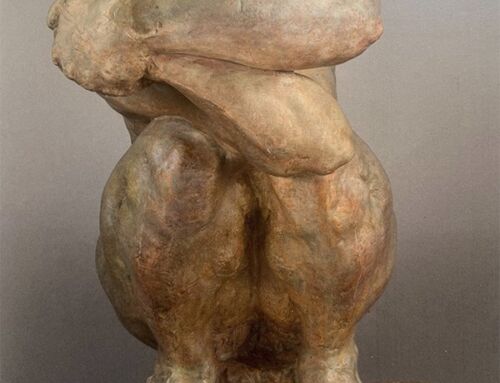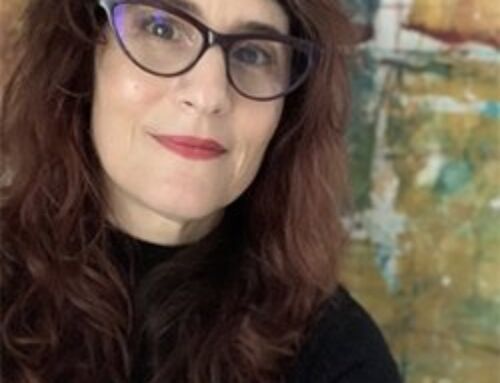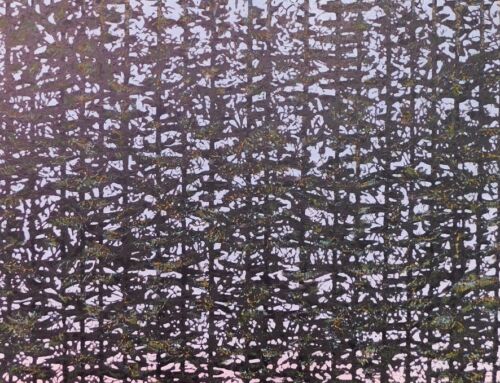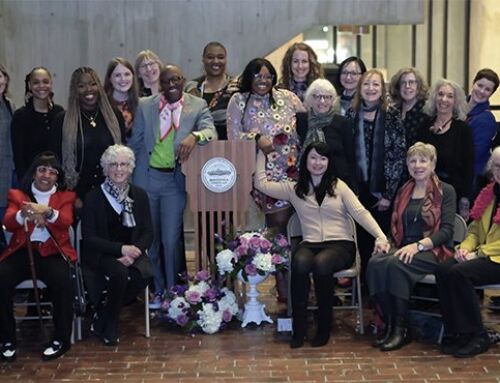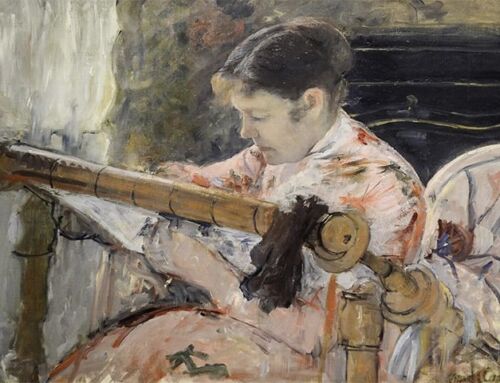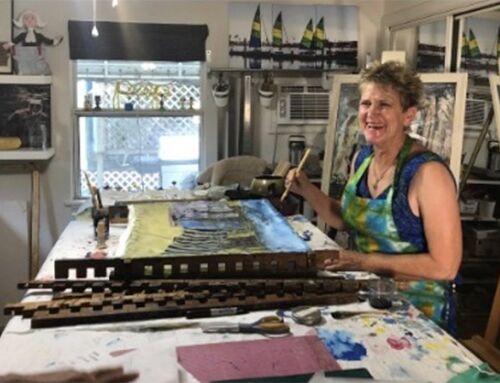
IN MEMORIAM: CAROL A. O’NEIL
NAWA Member Carol A. O’Neill, (Skromyda), 71, passed away on July 6, 2024, at Riverview Medical Center, Red Bank, NJ. Visitation was held at the Thiele-Reid Family Funeral Home, 585 Belgrove Drive, Kearny, NJ on Wednesday, on July 10. Interment arrangements were private.
Born in Jersey City, NJ, Carol was raised in Kearny. After marrying her husband Charles, the couple lived in the Netherlands for several years, returning to New Jersey in 2000 and settling in Fairhaven.
Carol was a Fine Artist beginning at age 16. She received an MFA from the Vermont College of Fine Arts, a BFA at the School of Visual Arts in New York City, and the Newark School of Fine and Industrial Arts in New Jersey. A fine art painter, drawing was her love, and she produced many graphite drawings of nature. In her early years, Carol enjoyed painting with oils as well as egg tempera. Her work appeared in numerous national shows, and she won several prominent awards, including a fellowship from the New Jersey State Council on the Arts Individual Artist.
She was a member of the National Association of Women Artists in New York City and served on the Awards Committee.
Carol is survived by her husband, Charles O’Neill, her mother, Alice (Tucholski) Skromyda, one brother, Michael Skromyda and two sisters, Diane Skromyda and Janet Skromyda. She was predeceased by her father, Michael Skromyda.
Message from NAWA Now’s Sandra Bertram:
There are artists who inspire us with the beauty and power of their artworks. In Carol’s case, the grace, delicacy and elegance she brought to her drawings of the natural world were a mirror image of the same qualities she exhibited in her lifetime. I knew Carol primarily through her work, but on one occasion I was extremely touched by a beautiful get-well card she sent me in the mail after a surgery episode. It was the perfect gesture to brighten my day. She will be dearly missed by her NAWA family of artists, as well as everyone whose lives she touched.
From a previous NAWA Now issue:
Carol is a true avatar of the natural world. One look at her exquisite and intricate drawings reveals her perfect attunement to the botanical wonderland she observes in her own garden or the nearby Fair Haven Fields Natural Area of her native New Jersey. “Nature is where I find the peacefulness and inspiration for my work.” In addition to the photographs she takes, she also gathers and collects for research small plant life, from seeds to worn leaves. “I offer the viewer traces, remnants, shadows, shards and inferences—an appreciation of the botanical life around us.”

Carol A. O’Neill, Threads of Grass, Graphite on paper
It is not surprising that such attention to detail led to an appreciation of early Renaissance and Medieval panel paintings and a concentrated study and application of the egg tempera medium. Her formal art education includes a Bachelor of Fine Arts Degree from the School of Visual Arts in New York City and Master of Fine Arts Degree from Vermont College of Fine Arts. She continued her education by attending workshops in the United States and Europe, including the techniques of Russian Icon painting and the contemplative spirit imbued within such works.

Carol A. O’Neill, Palm Reader, Graphite on paper
Her portrayal of plant life in its natural setting is perhaps best expressed through her mastery of silverpoint drawing, which oxidizes over time to deeper hues. Utilizing such techniques helps her to bridge the gap between contemporary and historical art. “Drawing is a passion of mine—it is the essence of my work. I believe drawing offers a passage within‒a direct connection to the imagination, memories, dreams and underlying thoughts and emotions.”
Solo and group exhibitions of Carol’s paintings and drawings have been held here and abroad. She is honored to have received a number of awards, including a New Jersey State Council On The Arts Individual Artist Fellowship, an artist residency at Millay Colony for the Arts in Austerlitz, New York and the NAWA Medal of Honor & Elizabeth Morse Genius Foundation Award at NAWA’s 129th Annual Members’ Exhibition in NYC.
Readers can learn more by going to www.carolaoneill.com

Carol A. O’Neill, Palm Lines, Graphite on paper

Carol A. O’Neill, Blackberry Rush, Graphite on paper
IN MEMORIAM: FAITH RINGGOLD
NAWA Honorary Vice President Faith Ringgold, a multimedia artist who has been described as weaving Black life into “story quilts,” died recently at the age of 93. Her story quilts consisted of large panels of unstretched canvas, painted with acrylics. She also explored her artistic vision through painting, sculpture, mask- and doll-making, textiles and performance art. Her work is in the permanent collections of the Museum of Modern Art, the Guggenheim Museum, the Philadelphia Museum of Art and the National Gallery of Art in Washington, D.C.
For the full text of her obituary, please go to this link in the New York Times: https://www.nytimes.com/2024/04/13/arts/faith-ringgold-dead.html.

Ms. Ringgold’s painting, “American People Series #20: Die”, was completed in 1967 and is on display at MOMA. In her monograph on the piece, MOMA’s Anne Monahan had this to say, “Die’s formal discipline imparts a clarity that can be deceptive. The figures’ consistency – both their uniform clothing and depiction as racial types—makes it difficult to tell whether they represent one giant melee or sequential views of a few, repeating characters. At the same time, their matching bourgeois outfits imply that some class commonality has ruptured for unknown reasons.”

Her piece at the National Gallery, The American People Series #18: The Flag is Bleeding, was painted in the 1960s, an era “of profound political conflict and protests for civil rights and against the Vietnam War. …Ringgold developed a unique figurative style to explore the experiences of African Americans during this period,” according to the curation panel displayed with the painting in the East Wing.
IN MEMORIAM: MILDRED KAYE
Mildred Kaye (Manis), 94, of Pompton Plains, NJ passed away on January 14, 2024. She was born in Bronx, NY and lived in Saddle Brook, NJ before moving to Cedar Crest in 2008. She was a graduate of Indiana University and received her Masters Degree in Education from Montclair State College. She was a teacher at Bergen Technical High School in Teterboro, NJ for many years, retiring in 1997.

Piggyback, Pastel 13 in. x 20 in.
Mildred was a member of the New Jersey Education Association and NAWA. At Cedar Crest, she taught art and was a member of the Socrates Club and the Current Events Club. She was the beloved wife of the late Morton Robert Kaye and also is predeceased by her sister, Beatrice Armus. She is survived by her daughters, Leslie Kellogg (Paul), Heather Rizzo (Louis), sons Erik Kaye and Michael Kaye (Mary), seven grandchildren, ten great grandchildren and five great-great grandchildren. A service was held January 21, 2024 at the Sanctuary of Abraham and Sarah, Cedar Park and Beth El Cemetery, 735 Forest Avenue, Paramus, NJ.

“Icarus Falling”, 29 in. x 19 in. Digital Painting, Giclée on Canvas
Mildred has been called a Romantic Surrealist. Her works are destined to be mood pieces, invoking a wide range of moods from whimsy, humor and fantasy to romantic. Mildred alternated between three very disparate sides that comprised her artistic persona: playful, technical and romantic. Some of the works evoked nostalgia, drawing on childhood memories. Mythology lent inspiration for other works, which are fashioned into dreamscapes of classical serenity.
From NAWA’s Susan Hammond:
Mildred worked on the NAWA catalog for many years before Sonia Stark took it over and more recently others. She was the first one to design the cover with all of the boxes.
Mildred had a great sense of humor and was very inventive with her work. I have one of her collages. She was one of the first NAWA artists who worked on digital collage. She was ahead of her time.
My husband and I took her out for dinner to celebrate her 90th birthday, a few years ago. She will be missed.
IN MEMORIAM: AUDREY FLACK
Audrey Flack, an internationally acclaimed painter, sculptor, pioneer of photorealism, vocal advocate for women artists, and a NAWA Honorary VP, died at a hospital in Southampton, NY, on June 28, 2024. She was 93. Audrey Flack’s indomitable spirit emboldened our efforts as a women’s art organization, which long ago determined we could be strong advocates for each other.

Audrey Flack in her studio, 2023. Photo courtesy of Hollis Taggert Gallery.
Audrey Lenora Flack, born on May 30, 1931, in Manhattan, was the younger of two children of Morris Flack, who owned a garment factory, and Jeanette (Flichtenfeld) Flack, both immigrants from Poland. Audrey graduated from the High School of Music & Art (now the Fiorello H. LaGuardia High School of Music & Art and Performing Arts) and won admission to the Cooper Union. From there, she transferred to Yale, earning her BFA in 1952 after being recruited by the artist and educator Josef Albers. She later studied anatomy with Robert Beverly Hale at the Art Students League.
While at the Cooper Union, Audrey began visiting the Cedar Tavern, a well-known artists’ hangout in Greenwich Village, and met older painters like Jackson Pollock and Willem de Kooning. She was a member of their crowd, producing powerful nonfigurative paintings — even as she resisted unwanted advances. Unable to live that unhealthy lifestyle and disillusioned, she left abstract expressionism behind, finding material from photographs and news clippings while embracing more figurative work.
Early in her career, Ms. Flack taught anatomy at New York University and led drawing and painting classes at Pratt Institute in Brooklyn and the School of Visual Arts in New York.
In the early 1960s, Ms. Flack began painting from photographs, including snapshots of her daughters and press photos of John F. Kennedy and people mourning his assassination. She became, unfashionably, a realist, treating subjects like “The Three Graces” in an updated Baroque style. A leading light (and the only woman) in the new photorealist movement of the 1960s, she controversially embraced the airbrush, a commercial illustrator’s tool.
Audrey frequently painted her family and struggled to reconcile her artistic career with her life as a mother. She was raising two young daughters (one autistic) and grappling with her marriage to Frank Levy, whom she described as abusive and whom she subsequently divorced in 1968. She married her high school sweetheart, Bob Marcus, in 1970, and he adopted her daughters.
By the early 1970s, Audrey had developed a meticulous approach to painting, in which she arranged objects in her studios, took a photograph, and projected the resulting image onto a large canvas, sometimes eight feet square, onto which she would apply brightly colored paint with an airbrush. She was represented by Louis K. Meisel, starting with his gallery’s first show in 1973.
Her Leonardo’s Lady (1974) was the first photorealist painting acquired by the Museum of Modern Art. In the early 1980s, Audrey switched to sculpture, working in bronze with more unambiguously feminist subjects. In 1998, her enormous bronze of Charles II’s Portuguese wife, Queen Catherine of Braganza, after whom the New York borough of Queens is thought to be named, was at the foundry. She had worked on it for nearly a decade. It stood 35 feet high – equivalent to a six-story building – and was destined for a spot on the East River, facing the United Nations building. When activists protested that Queen Catherine, as part of the English court and a subscriber to the Royal African Company, would have benefited from slavery, pressure mounted. Despite the interventions of academics who also noted that the queen had left money in her will to help free slaves, the project was canceled, and the almost-finished bronze statue melted down for scrap.
Among her public sculpture commissions are Monumental Gateway to the City of Rock Hill in South Carolina, consisting of four 20-ft. high bronze figures on granite pedestals; Veritas et Justitia, a 15-ft. high figure of “Justice” for the Thirteenth Judicial Circuit Courthouse in Tampa, Florida; and Islandia, a nine-foot high bronze sculpture for the New York City Technical College in Brooklyn, New York.
Audrey returned to painting, and in her final phase, which she called “Post-Pop Baroque,” she focused on drawing, influenced by an aesthetic that owed something to Dürer’s Melancholia mixed with the Wonder Woman of comic books. She was still experimenting at the end of her life, painting a new series she unveiled at New York’s Hollis Taggart Gallery in March 2024.
Audrey’s dogged commitment to painting in the face of setbacks and sexism was matched by her commitment to her family — knowing she had to keep the two separate. Keeping her daughter’s autism secret from the art world, in her 2024 autobiography, With Darkness Came Stars, Audrey noted that she didn’t want others to see the pain or the struggle she was dealing with. She thought that having a special-needs child would define her as a mother: a failure, a weak person, and her work dismissed as “ladies’ art.” “Art was my life long before I had children, and it would remain so forever,” she wrote.
Besides her recent autobiography, Audrey Flack was the author of three books, On Painting (Abrams 1986), The Daily Muse (Abrams 1989), and Art & Soul (Penguin USA 1991). There are numerous books on her work, including Thalia Gouma Peterson’s Breaking the Rules: Audrey Flack, a Retrospective, 1950-1990.
Her work resides in the Metropolitan Museum of Art, Solomon R. Guggenheim Museum, Whitney Museum of American Art, National Museum of Women in the Arts, Butler Institute of American Art, National Gallery of Australia, Pennsylvania Academy of Fine Art, and the Allen Memorial Art Museum. Additionally, she is the first woman artist, along with Mary Cassatt, to be included in Janson’s History of Art text.
“Audrey Flack NOW” will be on view at the Parrish Museum of Art, 279 Montauk Highway, Water Mill, New York, October 13, 2024–April 6, 2025.
From Commencement address at The Pennsylvania Academy of the Fine Arts, May 1974



